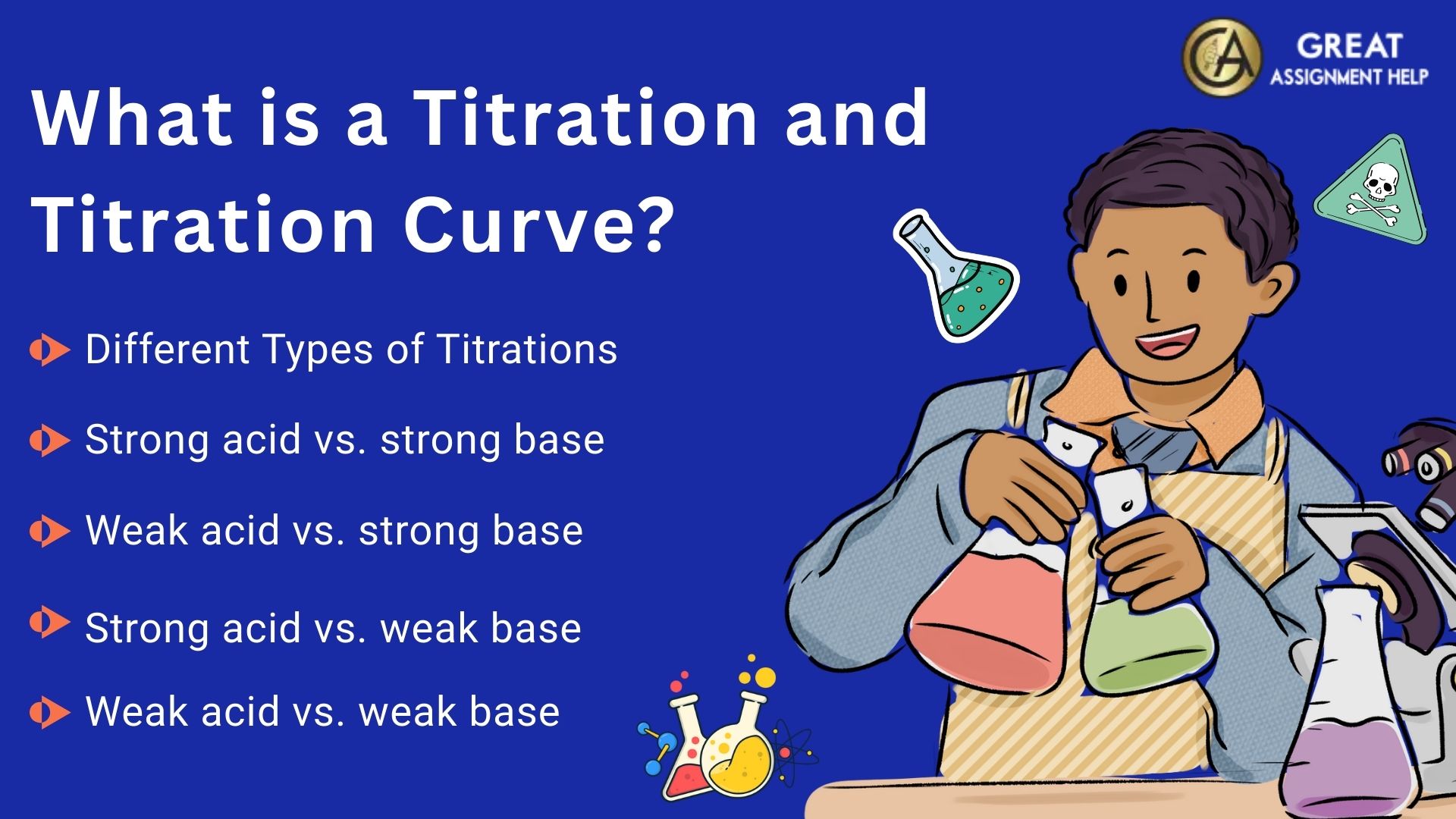Reaction mechanisms explain the step-by-step process of how reactions occur. Titration curves show how pH changes during acid-base reactions. Understanding both is the key to success in chemistry assignments and exams.
Chemistry is often called the central science because it connects physical sciences with life sciences and areas like medicine and engineering. But many students experience difficulties in learning chemistry, especially the important topics like reaction mechanisms and titration curves. In general, to master these essential chemistry concepts, students must have both understanding and practice. So, when they lack subject comprehension, they have been searching ‘Can I pay someone to take my online class?’ or approaching an expert for guidance.
If you are a high school student studying AP Chemistry or in college learning organic or analytical chemistry, unaware of topics such as reaction mechanisms and titration curves, then read this blog. Here, we have shared detailed insights to help you master reaction mechanisms and titration curves for chemistry assignments.
What are Reaction Mechanisms?
A reaction mechanism is a way to show how a chemical reaction happens. It mainly highlights all the small steps that happen during a chemical reaction. Overall, it explains how the reactants change into the final products. Instead of just saying what happens, it will specifically tell us how the molecules move and change in each step. This, in turn, will help us understand the process in detail.
Why Understanding the Reaction Mechanism Matters
Most chemical reactions don’t take place in a single step. They typically happen through several intermediate steps. Mostly, during these steps, temporary substances will be created, but they don’t appear in the final equation. However, understanding the reaction mechanism will help chemists
- Predict which products will form
- Calculate how quickly the reaction occurs
- Develop improved chemical methods
- Make new drugs and materials
Basics of Reaction Mechanisms
Reaction mechanisms describe the step-by-step process of how chemical reactions occur. They usually show the small changes that happen at the molecular level to turn reactants into products. Simply by understanding these basic concepts, you can explain why reactions happen the way they do.
Elementary Steps
Each step in a reaction mechanism is called an elementary reaction. It involves only a few reactant molecules. These steps can have one molecule (unimolecular), two molecules (bimolecular), or three molecules (termolecular), although steps with three molecules are very rare.
Intermediates
These are molecules that show up during the reaction steps but don’t appear in the final equation. One step makes them, and a later step uses them up.
Rate-Determining Step (RDS)
It is the slowest part of the reaction and determines how quickly the entire reaction proceeds. This step limits the overall reaction rate.
Catalysts and Inhibitors
Catalysts speed up reactions without using themselves up, while inhibitors slow reactions down. Both catalysts and inhibitors can be part of the reaction steps and change how fast the reaction goes.
Reaction Coordinate Diagrams
These are graphs that show how energy changes during a reaction. They will highlight activation energy, intermediates, and transition states and help you visualize how energy shifts throughout the reaction process.
Common Reaction Mechanism
In organic chemistry, there are some reaction types that happen often. These are called common mechanisms. They show the usual ways molecules react and change in organic compounds.
The following are some common reaction mechanisms
- SN1 and SN2 reactions: These are called nucleophilic substitution. In these, one group in a molecule is replaced by another.
- E1 and E2 reactions: These are elimination reactions. They remove parts of a molecule to form a double bond.
- Electrophilic addition and substitution: It happens when an electron-loving group (electrophile) adds to or replaces part of a molecule.
- Radical reactions: They involve atoms or molecules with unpaired electrons, which are very reactive and can cause chain reactions.
Generally, each mechanism will follow specific patterns based on the structure of the molecules and reaction conditions. If it is tough for you to understand the common reaction mechanisms, get assignment help from chemistry experts. They will explain in detail about chemical reaction mechanism with examples.
What is a Titration and Titration Curve?

Titration is a method used in chemistry labs to figure out how much of a substance is in a solution. It works by slowly adding another liquid (called the titrant) that reacts with the substance in the solution. This continues until the reaction is complete, which is called the endpoint. During the titration process, the pH (acidity or basicity) of the solution will change.
For titrations, picking the right pH indicator is very important. The indicator should change color near the equivalence point. This helps make sure the titration results are accurate.
A titration curve is a graph that shows how the pH changes as more titrant is added. This graph will usually help scientists understand the chemical behavior of the substances being tested.
Different Types of Titrations
The following are the different types of titrations
Strong acid vs. strong base
Example: HCl + NaOH
The pH changes very quickly near the point where the acid and base completely react. This point is the equivalence point, and it usually happens at pH 7, which is neutral.
Weak acid vs. strong base
Example: Acetic acid + NaOH
When you add the base, the pH goes up slowly at the beginning. This creates something called a buffer region where the pH does not change much. After that, the pH increases more, and the equivalence point happens. The equivalence point is above pH 7. This means the solution is a little basic.
Strong acid vs. weak base
Example: HCl + NH₃
In this case, the pH at the equivalence point is below 7. That means the solution is still acidic when the acid and base have fully reacted.
Weak acid vs. weak base
CH₃COOH + NH₃ ⇌ CH₃COO⁻ + NH₄⁺
These reactions don’t show a sharp change in pH. The curve is more gradual and unclear, so it is harder to find the exact equivalence point.
Essential Parts of a Titration Curve
A titration curve shows how the pH changes as a reaction progresses. Understanding its essential parts, listed here, will help you identify the key stages involved in the titration
- Initial pH: It shows the pH of the solution before the addition of any titrant.
- Buffer Region: In titrations involving weak acids or bases, this is the area where the pH changes slowly.
- Equivalence Point: This is the point where the added titrant exactly neutralizes the substance being tested.
- Half-Equivalence Point: The point when half of the acid neutralizes, and the pH equals the pKa.
- Post-Equivalence: After the analyte fully neutralizes, the extra titrant causes the pH to change.
Challenges in Writing Chemistry Assignments on Reaction Mechanisms and Titration Curves
Writing chemistry assignments on reaction mechanisms and titration curves can be difficult due to the complexity of the topics and the need for clear explanations. However, when students face these problems during chemistry assignments, they can approach an expert for assistance
- Difficulty in understanding and explaining detailed step-by-step mechanisms
- Struggle to accurately interpret and draw titration curves
- Unsure how to connect theory with practical examples and experiments
- Fail to use proper chemical terminology and notation
- Struggle to present complex concepts in a clear and simple way
- Tough to maintain clarity and focus in writing
- Fail to prevent misconceptions about acid-base reactions and equilibrium
Final Words
Chemistry is one of the challenging subjects to learn. Especially to write chemistry assignments on reaction mechanisms or a titration curve, you must have a strong comprehension of the basic concepts involved in the process. If you have poor subject knowledge, then send a ‘take my online chemistry class for me’ request to us, or get chemistry assignment help from the experts on our team. From basic high school chemistry to more advanced topics like organic and analytical chemistry, our specialists will provide detailed explanations. Also, with their guidance, you can improve your subject comprehension, finish your assignment on time, and score top grades.



